Posted in: Aha! Blog > Wit & Wisdom Blog > Implementation Support Data Stories Student Achievement > Thoughtful Wit & Wisdom® Implementation Has Been Key to Buy-In and Success
Talk about commitment.
The four Grade 3 teachers at Grass Valley Elementary School in Humboldt County, Nevada, meet at lunch every day to plan their Wit & Wisdom® lessons and discuss the day’s instruction. When preparing for a new module, they often meet after school as well.
DISTRICT PROFILE
12 schools:
- Four remote, rural K–8 schools
- Four K–4 schools
- One 5–6 school
- One 7–8 school
- One 9–12 school
- One K–12 school
3,400 students
Began implementing Wit & Wisdom in school year 2018–2019 for Grades 3–8
“We talk about what went well, when we used small groups versus whole group instruction, issues like that,” says teacher Mara Gilstrap. “It’s especially helpful for thinking about how we can improve our instruction for next year.”
Grass Valley students’ scores on the state’s English language arts (ELA) assessment show the benefits of such regular and focused discussions. The school’s Grade 3 students gained 24 points on the state test after only one year of learning with Wit & Wisdom during the 2018–2019 school year.
Grass Valley’s Grade 3 might be the brightest light so far in the Humboldt County School District, but it’s not the only one. All elementary and middle schools in the 3,400-student district in remote northwestern Nevada have embraced Wit & Wisdom. Educators like the curriculum’s rigor, its alignment with the Common Core State Standards, and its ability to engage students.
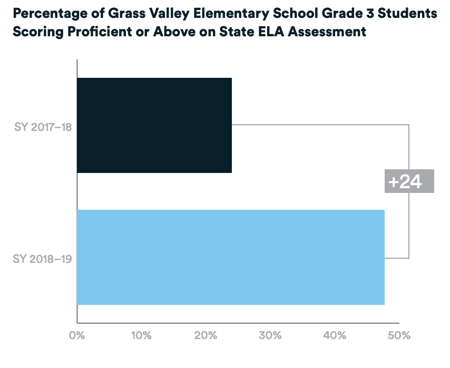
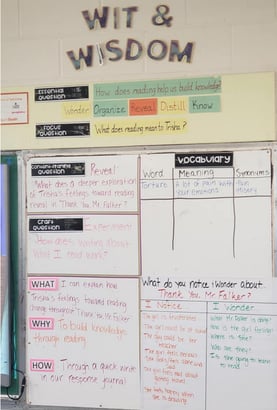
After just one year of implementation, district scores on the state test have risen an average of 3 percentage points, from 38 percent to 41 percent of students scoring proficient or above.
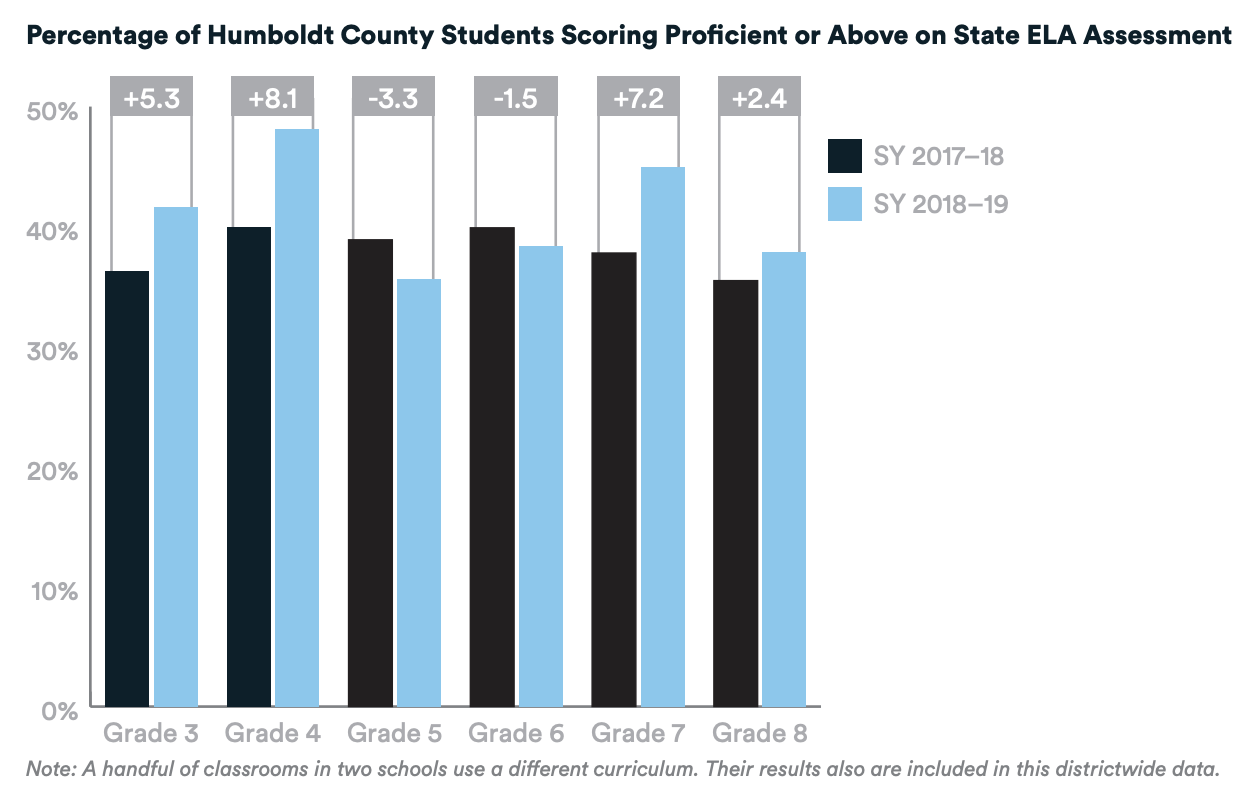
“I really like that the topics are covered in so much depth,” Gilstrap says. “It really builds students’ curiosity and interest.” 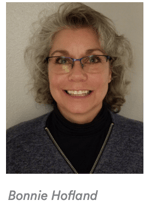
“I come from 17 years in higher education and especially appreciate how Wit & Wisdom aligns so closely with the standards,” says Bonnie Hofland, who leads the district’s induction efforts for new teachers. “Teachers can see specifically what they should be teaching. Having the end in mind makes planning so much easier.”
FIDELITY OF IMPLEMENTATION WAS KEY
The district has provided extensive support, starting with a very careful and phased-in approach to implementation. It worked with the state and the Achievement Network on a complete audit of district systems, including curriculum and assessments, and strategic professional development for district administrators, which underscored the limitations of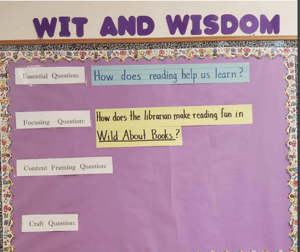 having each teacher develop her or his own teaching materials. After developing a five-year strategic plan, in Spring 2018 the district used leftover state funds to purchase Wit & Wisdom for all but its most remote school. (More on that later.)
having each teacher develop her or his own teaching materials. After developing a five-year strategic plan, in Spring 2018 the district used leftover state funds to purchase Wit & Wisdom for all but its most remote school. (More on that later.)
School administrators brought in experts from Great Minds® (the organization that created Wit & Wisdom as well as Eureka Math®, PhD Science®, and illustrated early reader books called Geodes®) for two days of summer training.
District leaders decided that teachers would be expected to teach only the first 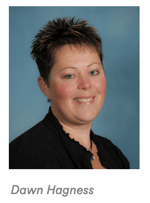 three modules in the first year, knowing that staff and students alike would need time to adjust to the higher expectations and new texts.
three modules in the first year, knowing that staff and students alike would need time to adjust to the higher expectations and new texts.
Year one focused on the fidelity of implementation. “All teachers were expected to implement with full fidelity. We told them to read the teacher guide out loud if they had to,” recalls Dawn Hagness, assistant superintendent. “We didn’t want anyone freelancing or bringing in other stuff.”
EXTENSIVE DISTRICT SUPPORT
The district developed implementation checklists and regularly visited classrooms to look for anchor charts, texts, journals, student writing, student discussion, and other evidence of learning. District leaders provided additional professional support, including a pacing guide, literacy specialists at each K–4 school, regular coaching and modeling, training for school leaders, a five-day induction for new teachers, mentors, and a districtwide coach who is available to provide one-on-one support.
Andrea Minich of Great Minds returns regularly to lead workshops. “Having Andrea come back midyear when teachers were using the materials was so helpful. She validated where they needed to be,” says Noel Morton, a district administrator who has mentored and coached the vice principal at Winnemucca Junior High School.
Grades in some schools receive additional support—a full day of planning once a month, plus weekly team meetings to review student progress. “I’ve been in education for more than 30 years, and I’ve never been in a district so dedicated to getting all teachers on the same page and getting the support they need,” says Hofland.
Laura Molini, an assistant principal at Winnemucca Junior High School, says the focused discussions in professional learning communities lead to action plans. “We’ll take what students didn’t totally get in Module 1, such as concluding statements, and make sure to build those concepts into Module 2,” she says.
Teachers bought in. “By the end of the year, teachers were begging for more planning time,” Hagness says. Teachers who had resisted even half a day of planning now wanted a full day. And all teachers have raised their expectations about what their students can do. “Their beliefs have shifted,” Hagness says. “If you give kids a high-quality text and good instruction, they will learn faster and at higher levels.”
“OWN” THE CURRICULUM
Hagness adds that teachers who created their own daily  lesson plans, slide presentations, and the like, as Wit & Wisdom facilitates, were more successful. “They internalized the materials,” she says.
lesson plans, slide presentations, and the like, as Wit & Wisdom facilitates, were more successful. “They internalized the materials,” she says.
Grade 8 teacher Brian Myers is Exhibit A for the importance of owning the curriculum. “I hated Wit & Wisdom in the beginning,” he says. “I went to the training and workshops and borrowed a colleague’s slides, but I had no idea what I was doing.” He was so frustrated that he even considered quitting teaching.
But when his principal told him to make the curriculum his own, the light bulb went on. “I grabbed four highlighters and started going through the books closely. Within two weeks there was a night-and-day change. Teaching was fun,” Myers says.
STUDENTS ARE EXCITED, TOO
“I’ve never seen students more engaged and excited about reading, writing, and sharing what they’re learning,” Hagness says. “When we visit schools, kids are coming up to us and asking, ‘Can you look at my notebook and journal?’”
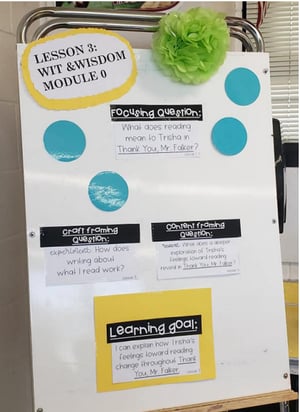 “They are so engaged. They love the books and not just having to use a basal reader,” Gilstrap says. Plus, she appreciates how relevant the lessons are. Having just finished the space module on the 50th anniversary of the Apollo moon landing, students were thrilled to see TV documentaries about the landmark event. “They were so excited to watch clips of CBS anchorman Walter Cronkite using exactly the same language to describe the moonwalk as they had just read.”
“They are so engaged. They love the books and not just having to use a basal reader,” Gilstrap says. Plus, she appreciates how relevant the lessons are. Having just finished the space module on the 50th anniversary of the Apollo moon landing, students were thrilled to see TV documentaries about the landmark event. “They were so excited to watch clips of CBS anchorman Walter Cronkite using exactly the same language to describe the moonwalk as they had just read.”
Oh, and about that very rural school that was not required to adopt Wit & Wisdom in 2018–2019? Its principal and staff saw the results elsewhere and asked to use the curriculum in 2019–2020. Its students (all low-income) have regularly scored in the bottom 5 percent across the state on the annual state tests.
“I was there on day three of school this past fall and was in tears,” Hagness says. “Students were using their anchor charts, talking about the books, and already writing. I’ve never seen that level of energy and passion for teaching and learning. The principal was beside herself with joy.”
"I've never seen students more engaged and excited about reading, writing, and sharing what they're learning. When we visit schools, kids are coming up to us and asking 'Can you look at my notebook and journal?'"
— Dawn Hagness, assistant superintendent
Humboldt County educators offer the following advice for other districts starting to use Wit & Wisdom. Focus on and support consistent implementation. Provide extensive professional development. Use student data to confront skeptics. “It really helped us that school administrators had the guts to say, ‘Look at your student data. There’s no evidence to support that what we are currently doing is benefitting students. I need you to do this. Trust me.’ And they are!” Hagness says.
Submit the Form to Print

Jenny Taylor
Jenny has over a decade of experience in education policy and research. She has worked with states and districts on the development and implementation of college and career readiness policies, especially around the implementation of rigorous standards and high-quality instructional materials. She has extensive knowledge about K–12 standards, graduation requirements, assessments, and accountability systems nationwide. Additionally, she has conducted research for school districts to address pressing needs in those districts. Jenny received her B.A. in English and education from Bucknell University and her M.Ed. in education policy from the University of Pennsylvania Graduate School of Education.
Topics: Implementation Support Data Stories Student Achievement












